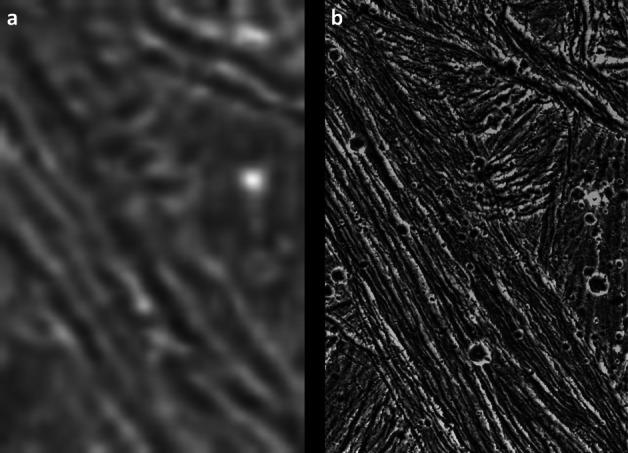Fig. 1.

Comparison of spatial resolutions in two images obtained during the Voyager (panel a) and Galileo (panel b) explorations of Ganymede. The left and right frames have a scale of ∼1.3 km px−1 and 74 m px−1, respectively. In the left frame (panel a), high-albedo (bright) and low-albedo (dark) bands can be seen but no details can be resolved. In the right frame (panel b), with a resolution improved by a factor of 17, each band turns out to be made of many smaller ridges. In both frames north is to the top, and the Sun illuminates the surface from the lower left. The area is centred at 10°N/167°W and is about 35 × 55 km in size (Image: NASA/JPL). The reports by Kersten et al. (2021) and Hansen et al. (2024) provide information on the images of Ganymede and Europa acquired by the Voyager, Galileo, and Juno missions, respectively
